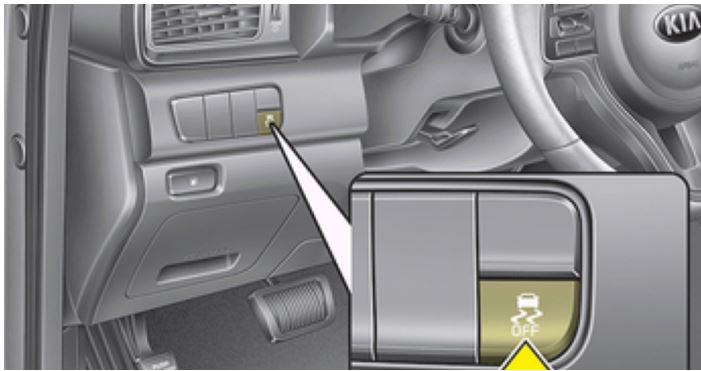Modern vehicles are packed with safety features, but few are as impactful as traction control systems. Mandated in passenger vehicles worldwide since 2014, these systems have been credited with saving countless lives by keeping drivers in control during slippery or dangerous conditions.
But here’s a puzzler: if it’s such a game-changer, why is there a button to turn it off?
Let’s get into what makes traction control so crucial—and why sometimes, just sometimes, you might need to deactivate it.
What Is Traction Control?
Traction control, often referred to as anti-skid systems, is an enhancement of the Anti-lock Braking System (ABS). Its primary job is to prevent wheel spin and maintain vehicle stability during acceleration.
Over the years, these systems have become increasingly sophisticated, adopting names like ESC (Electronic Stability Control), VSC (Vehicle Stability Control), DSC (Dynamic Stability Control), and Stabilitrak, depending on the manufacturer.
At its core, traction control works by collecting data from multiple sensors, including:
- Speed Sensors: Monitor individual wheel speeds.
- Steering Angle Sensors: Detect the direction the driver wants to go.
- Inertia Measurement Units (IMU): Assess vehicle dynamics like tilt and rotation.

TC enabled vs without TC
Using this data, the system can control braking, throttle (accelerator), steering, transmission and even suspension (on some advanced models) to prevent over steer, understeer, hydroplaning, skidding, or sliding. Essentially, it helps keep the car planted and pointed in the right direction, even in challenging conditions.
The Evolution of a Life-Saving Feature
Traction control has advanced to such an extent that some argue it has made drivers overconfident. To counter this, modern systems alert the driver whenever they activate, typically with a blinking warning light, a chime, or both.

But here’s an important note: traction control doesn’t make driving foolproof. It can only work within the physical limits of the vehicle. Push too hard, and even this system won’t save you.
Why Disable Traction Control?

Traction Control off switch
While traction control is indispensable in most situations, there are specific scenarios where turning it off can be beneficial—or even necessary:
- Off-Road Driving: On sand, mud, or loose gravel, traction control can actually hinder performance by preventing wheel spin, which is sometimes needed to maintain momentum.
- High-Performance Driving: On a racetrack, experienced drivers may prefer to control the car’s dynamics manually. Traction control can intervene too early, limiting the car’s potential and making it harder to find its limits.
- Deep Mud, Sleet, Snow or Ice: In extreme weather conditions, a bit of wheel spin can be helpful to get moving. Traction control might cut power too aggressively, leaving you stuck.
- Mechanical Issues: If there’s a problem with the system’s sensors or components, it may behave unpredictably. Many modern vehicles will alert you to such issues and disable the system, urging you to drive cautiously.
- High-Horsepower Vehicles: Cars with immense power might overwhelm the traction control system, especially during sudden acceleration. In these cases, skilled drivers may prefer to manage the power manually.
- Tire Conditions: Traction control relies on good tire grip to function properly. Worn or improperly inflated tires can reduce its effectiveness, making manual intervention more reliable in some cases.
A Gateway to Advanced Features
Modern traction control systems have paved the way for additional safety technologies, including:
- Automatic Emergency Braking (AEB): Applies brakes to avoid collisions.
- Adaptive Cruise Control: Maintains a safe following distance automatically.
- Collision Mitigation Systems: Warns the driver and prepares the car for impact.
- Hill Descent Control: Manages braking on steep declines.
These advancements are transforming how we drive, making roads safer for everyone.
The Bottom Line
For most drivers, it’s best to leave traction control on. It’s an incredible tool that enhances safety in almost every driving condition. However, knowing when and why to deactivate it can help you make the most of your vehicle’s capabilities when the situation demands.
Next time you’re tempted to hit that button, think about where you are and what you need your car to do. This understanding of traction control could make all the difference.
Happy Motoring…
-
The author, Edward Boateng Opoku, also known professionally as Eddie Poku, is an automotive enthusiast and content creator. He's the brain behind Ryde Channel on YouTube.
Ryde Channel's content covers auto enthusiast profiling, car and motorcycle reviews, and auto events. Edward likes to participate in discussions about cars, motorcycles, and the automotive industry in general.
You can catch up with Eddie Poku via the following channels: YouTube: Ryde Channel
LinkedIn: www.linkedin.com/in/edwardopoku2018 • www.rydechannel.com
Latest Stories
-
I’m not too old to be ignored, I’ve sacrificed for NPP – Kufuor laments exclusion
50 minutes -
Sinner beats Alcaraz in four sets to clinch Wimbledon title
50 minutes -
MTN Ghana champions youth mentorship drive at UG with focus on digital skills
1 hour -
Kufuor demands respect and inclusion; laments marginalisation by NPP
1 hour -
Black Queens outstanding allowances has been paid – Ghana’s Ambassador to Morocco
2 hours -
Mobik Energy CEO raises alarm over Tarkwa’s disappearing rivers and environmental neglect
2 hours -
Former Nigerian President Muhammadu Buhari dies in London
3 hours -
Hard work, not betting, will secure your future -Mobik Energy CEO advises Tarkwa Youth
3 hours -
GIA boss debunks claim payment misconceptions as ‘Street Insurance Campaign’ educates public
3 hours -
Asempa FM’s Ekosiisen supports renal patients with GHS100K, urges gov’t to absorb full cost of dialysis care
3 hours -
WAFCON 2024: We have ‘good options in attack’ – Bjorkegren backs Queens to improve goalscoring
4 hours -
Vice President convenes strategic stakeholder meeting on Women’s Development Bank
4 hours -
Bawumia visits Hawa Koomson after violent attack during Ablekuma North rerun
4 hours -
Bawumia visits assault victims in Ablekuma North rerun; pledges support
4 hours -
Mahama charges Transport Minister and Attorney-General to resolve unauthorised shipping charges
4 hours

